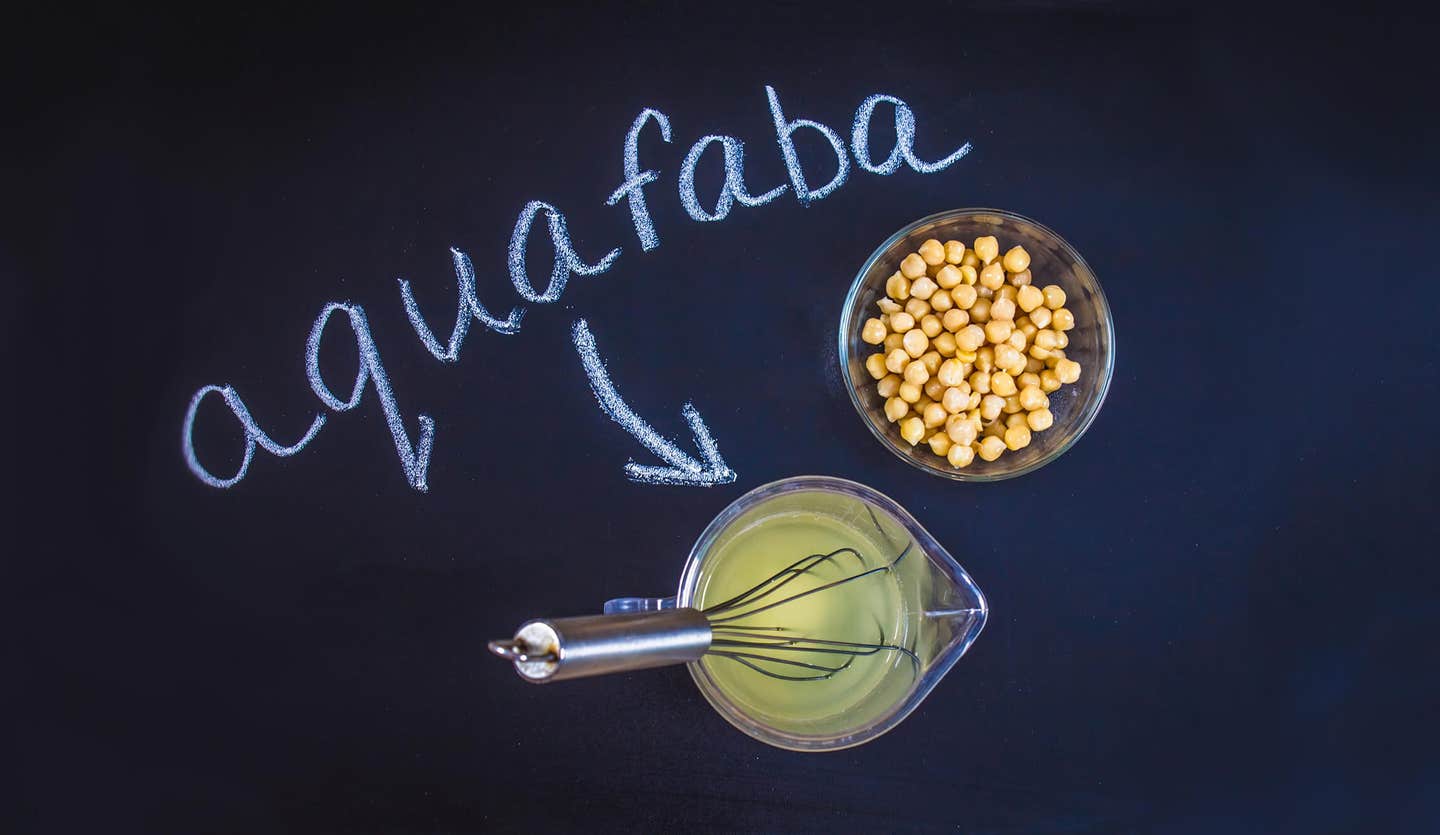
What Is Aquafaba? How to Use It in Cooking
Since it was discovered less than three years ago by French chef Joël Roessel, aquafaba has been all the rage with vegan cooks.
Aquafaba is simply the name for the viscous liquid left over after boiling chickpeas. It's an extremely versatile egg substitute for cooking and baking: when beaten, it turns white and fluffs up just like egg whites.
Uses For Aquafaba
You can try your hand at cooking with aquafaba just by straining the liquid from a freshly shaken can of chickpeas, or you can make it from scratch using this recipe. While chickpeas seem to provide the best results and don't add any noticeable taste to a recipe, the aquafaba left over from cooking other beans and legumes can be used the same way.
Aquafaba keeps wells in the fridge, but only for two or three days. It also freezes well; try freezing small, ready-to-use portions in ice cube trays.
Try aquafaba in any recipe that calls for eggs or egg whites: 1 to 2 tablespoons is enough to replace an egg white, while 2 to 3 tablespoons will suffice to replace a whole egg.
Aquafaba works well in French toast and waffle recipes, and it's a great egg replacer in savory dishes, like frittatas. It can even be used to make chocolate mousse, mayonnaise, and cheese.
Aquafaba has created a small vegan food revolution. The next time you're soaking and boiling chickpeas for hummus or your favorite chickpea salad make sure to keep the precious leftover liquid and experiment with its many possibilities.
About the Author

About the Author
Isabel Putinja
Join our mailing list
Get free recipes and the latest info on living a happy, healthy plant-based lifestyle.
By providing your email address, you consent to receive newsletter emails from Forks Over Knives. We value your privacy and will keep your email address safe. You may unsubscribe from our emails at any time.
